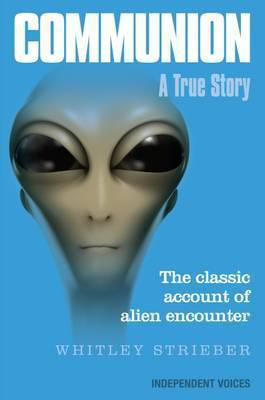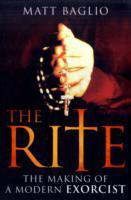Ancient Greek Computer Unveiled: Gravitational Wave Techniques Reveal New Insights
Mythology/Folklore/History
Tuesday 2nd, July 2024
4 minute read.
Groundbreaking techniques developed to analyse the ripples in spacetime, detected by one of the 21st century's most sensitive pieces of scientific equipment, have cast new light on the function of the oldest known analogue computer.
Astronomers from the University of Glasgow have employed statistical modelling techniques, originally devised for studying gravitational waves, to establish the likely number of holes in one of the broken rings of the Antikythera mechanism. This ancient artefact, recently showcased in the film "Indiana Jones and the Dial of Destiny", has intrigued scientists for over a century.
The Antikythera mechanism was discovered in 1901 by divers exploring a sunken shipwreck near the Aegean island of Antikythera. Despite being fragmented and eroded, the shoebox sized device was quickly identified as a complex series of intricately tooled gears.
Decades of research have determined that the mechanism, dating back to the second century BCE, functioned as a hand-operated mechanical computer. Its exterior dials connected to internal gears allowed users to predict eclipses and calculate the astronomical positions of planets with unparalleled accuracy for its time.
In 2020, new X-ray images of the mechanism's "calendar ring" revealed details of regularly spaced holes beneath it. However, since the ring was incomplete, the exact number of holes remained uncertain. Initial analysis by researcher Chris Budiselic and colleagues suggested the number was likely between 347 and 367.
Now, a new paper published in the Horological Journal describes how the Glasgow researchers applied two statistical analysis techniques to reveal new details about the calendar ring. The study suggests that the ring is vastly more likely to have had 354 holes, corresponding to the lunar calendar, rather than 365 holes, which would align with the Egyptian calendar. This conclusion is also significantly more probable than the previously suggested 360 hole count.
Professor Graham Woan of the University of Glasgow's School of Physics & Astronomy, one of the paper's authors, was inspired to apply these techniques after seeing data acquired by YouTuber Chris Budiselic, who was investigating ways to replicate the calendar ring.
"It struck me as an interesting problem, and one that I thought I might be able to solve in a different way during the Christmas holidays, so I set about using some statistical techniques to answer the question", said Professor Woan.
He utilised a technique called Bayesian analysis, which uses probability to quantify uncertainty based on incomplete data. His calculations showed strong evidence that the calendar ring contained either 354 or 355 holes. At the same time, Dr. Joseph Bayley from the University's Institute for Gravitational Research adapted methods used to analyse signals from the LIGO gravitational wave detectors. These detectors measure tiny ripples in spacetime caused by massive astronomical events, such as the collision of black holes.
The Markov Chain Monte Carlo and nested sampling methods employed by Woan and Bayley provided a comprehensive probabilistic set of results, again suggesting the ring most likely contained 354 or 355 holes in a circle of radius 77.1 millimetres, with an uncertainty of about 0.33 millimetres. The study also revealed that the holes were positioned with extraordinary precision, with an average radial variation of just 0.028 millimetres between each hole.
Dr. Bayley noted, "Previous studies had suggested that the calendar ring was likely to have tracked the lunar calendar, but the dual techniques we've applied in this piece of work greatly increase the likelihood that this was the case".
He added, "It's given me a new appreciation for the Antikythera mechanism and the work and care that Greek craftspeople put into making it, the precision of the holes' positioning would have required highly accurate measurement techniques and an incredibly steady hand to punch them".
Professor Woan highlighted the significance of their interdisciplinary approach, saying, "It's a neat symmetry that we've adapted techniques we use to study the universe today to understand more about a mechanism that helped people keep track of the heavens nearly two millennia ago"
While their findings may lack the supernatural allure of those in the latest Indiana Jones film, they significantly enhance our understanding of the remarkable craftsmanship and technological prowess of ancient Greek society.
Astronomers from the University of Glasgow have employed statistical modelling techniques, originally devised for studying gravitational waves, to establish the likely number of holes in one of the broken rings of the Antikythera mechanism. This ancient artefact, recently showcased in the film "Indiana Jones and the Dial of Destiny", has intrigued scientists for over a century.
The Antikythera mechanism was discovered in 1901 by divers exploring a sunken shipwreck near the Aegean island of Antikythera. Despite being fragmented and eroded, the shoebox sized device was quickly identified as a complex series of intricately tooled gears.
Decades of research have determined that the mechanism, dating back to the second century BCE, functioned as a hand-operated mechanical computer. Its exterior dials connected to internal gears allowed users to predict eclipses and calculate the astronomical positions of planets with unparalleled accuracy for its time.
In 2020, new X-ray images of the mechanism's "calendar ring" revealed details of regularly spaced holes beneath it. However, since the ring was incomplete, the exact number of holes remained uncertain. Initial analysis by researcher Chris Budiselic and colleagues suggested the number was likely between 347 and 367.
Now, a new paper published in the Horological Journal describes how the Glasgow researchers applied two statistical analysis techniques to reveal new details about the calendar ring. The study suggests that the ring is vastly more likely to have had 354 holes, corresponding to the lunar calendar, rather than 365 holes, which would align with the Egyptian calendar. This conclusion is also significantly more probable than the previously suggested 360 hole count.
Professor Graham Woan of the University of Glasgow's School of Physics & Astronomy, one of the paper's authors, was inspired to apply these techniques after seeing data acquired by YouTuber Chris Budiselic, who was investigating ways to replicate the calendar ring.
"It struck me as an interesting problem, and one that I thought I might be able to solve in a different way during the Christmas holidays, so I set about using some statistical techniques to answer the question", said Professor Woan.
He utilised a technique called Bayesian analysis, which uses probability to quantify uncertainty based on incomplete data. His calculations showed strong evidence that the calendar ring contained either 354 or 355 holes. At the same time, Dr. Joseph Bayley from the University's Institute for Gravitational Research adapted methods used to analyse signals from the LIGO gravitational wave detectors. These detectors measure tiny ripples in spacetime caused by massive astronomical events, such as the collision of black holes.
The Markov Chain Monte Carlo and nested sampling methods employed by Woan and Bayley provided a comprehensive probabilistic set of results, again suggesting the ring most likely contained 354 or 355 holes in a circle of radius 77.1 millimetres, with an uncertainty of about 0.33 millimetres. The study also revealed that the holes were positioned with extraordinary precision, with an average radial variation of just 0.028 millimetres between each hole.
Dr. Bayley noted, "Previous studies had suggested that the calendar ring was likely to have tracked the lunar calendar, but the dual techniques we've applied in this piece of work greatly increase the likelihood that this was the case".
He added, "It's given me a new appreciation for the Antikythera mechanism and the work and care that Greek craftspeople put into making it, the precision of the holes' positioning would have required highly accurate measurement techniques and an incredibly steady hand to punch them".
Professor Woan highlighted the significance of their interdisciplinary approach, saying, "It's a neat symmetry that we've adapted techniques we use to study the universe today to understand more about a mechanism that helped people keep track of the heavens nearly two millennia ago"
While their findings may lack the supernatural allure of those in the latest Indiana Jones film, they significantly enhance our understanding of the remarkable craftsmanship and technological prowess of ancient Greek society.



